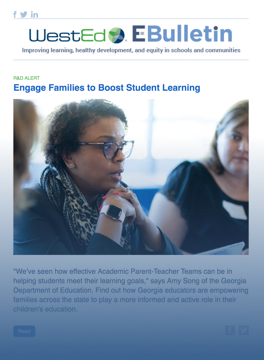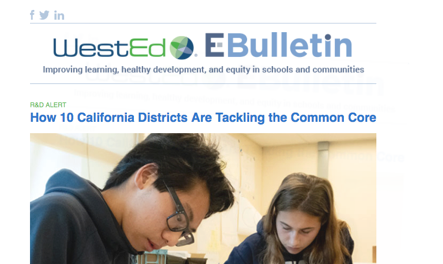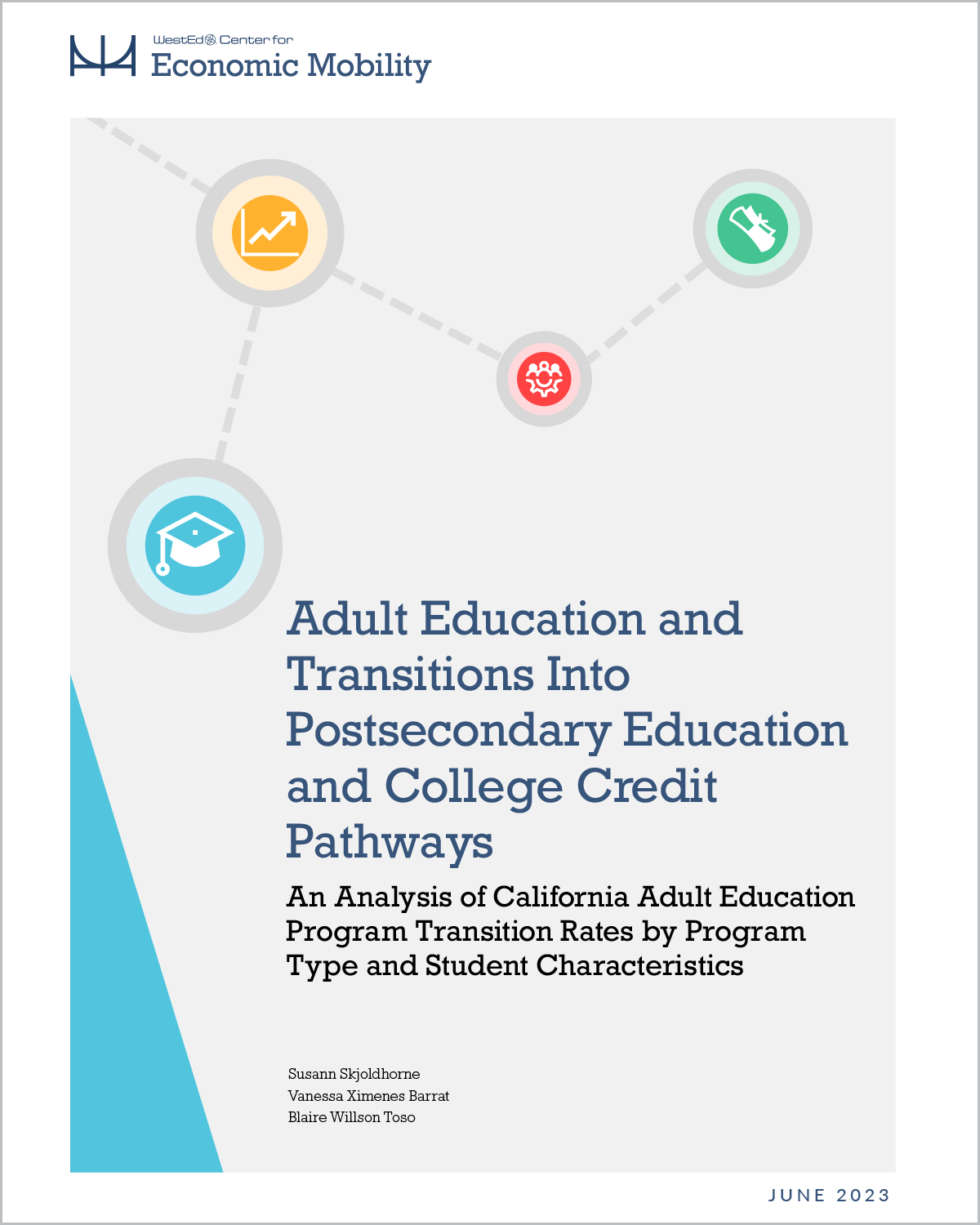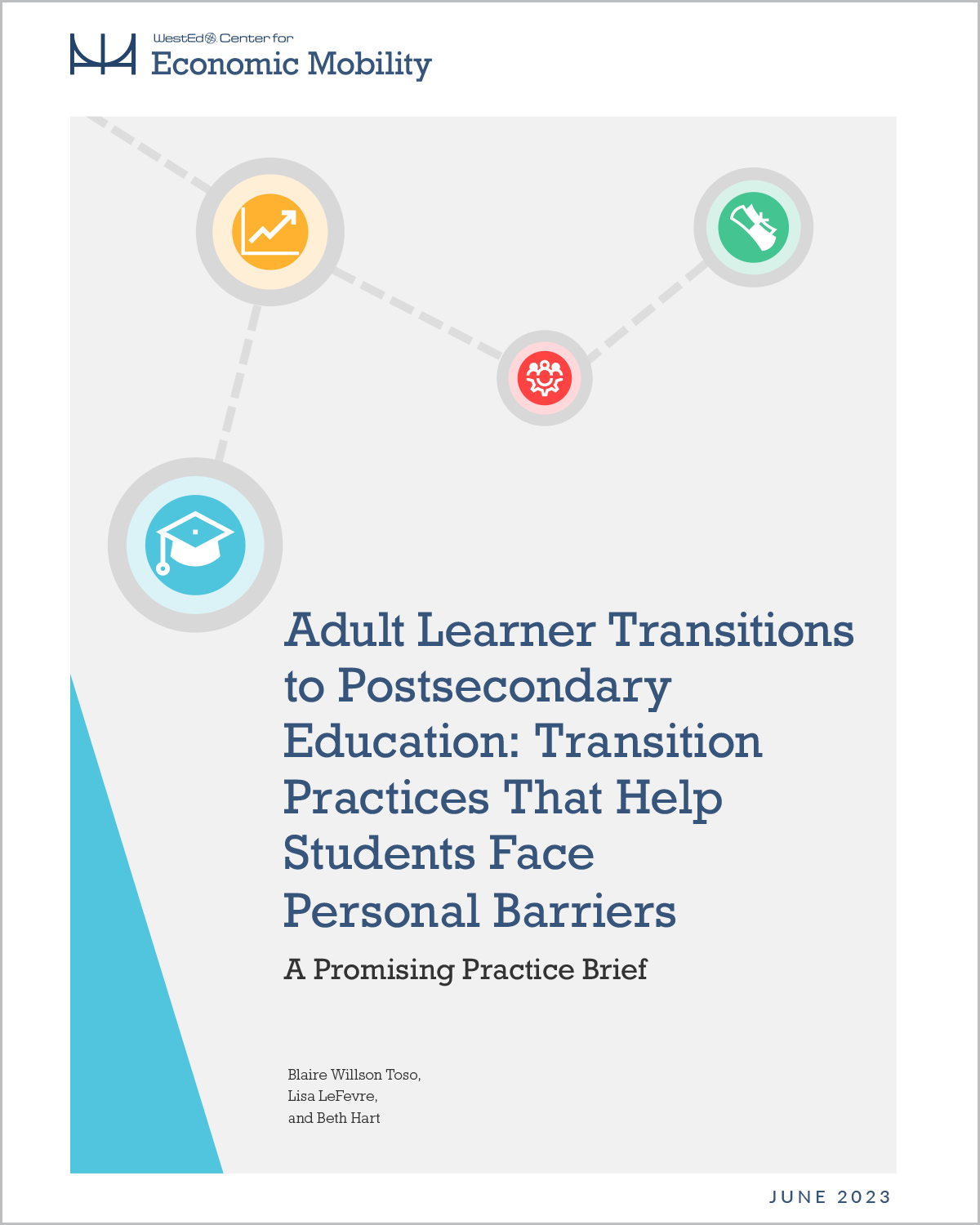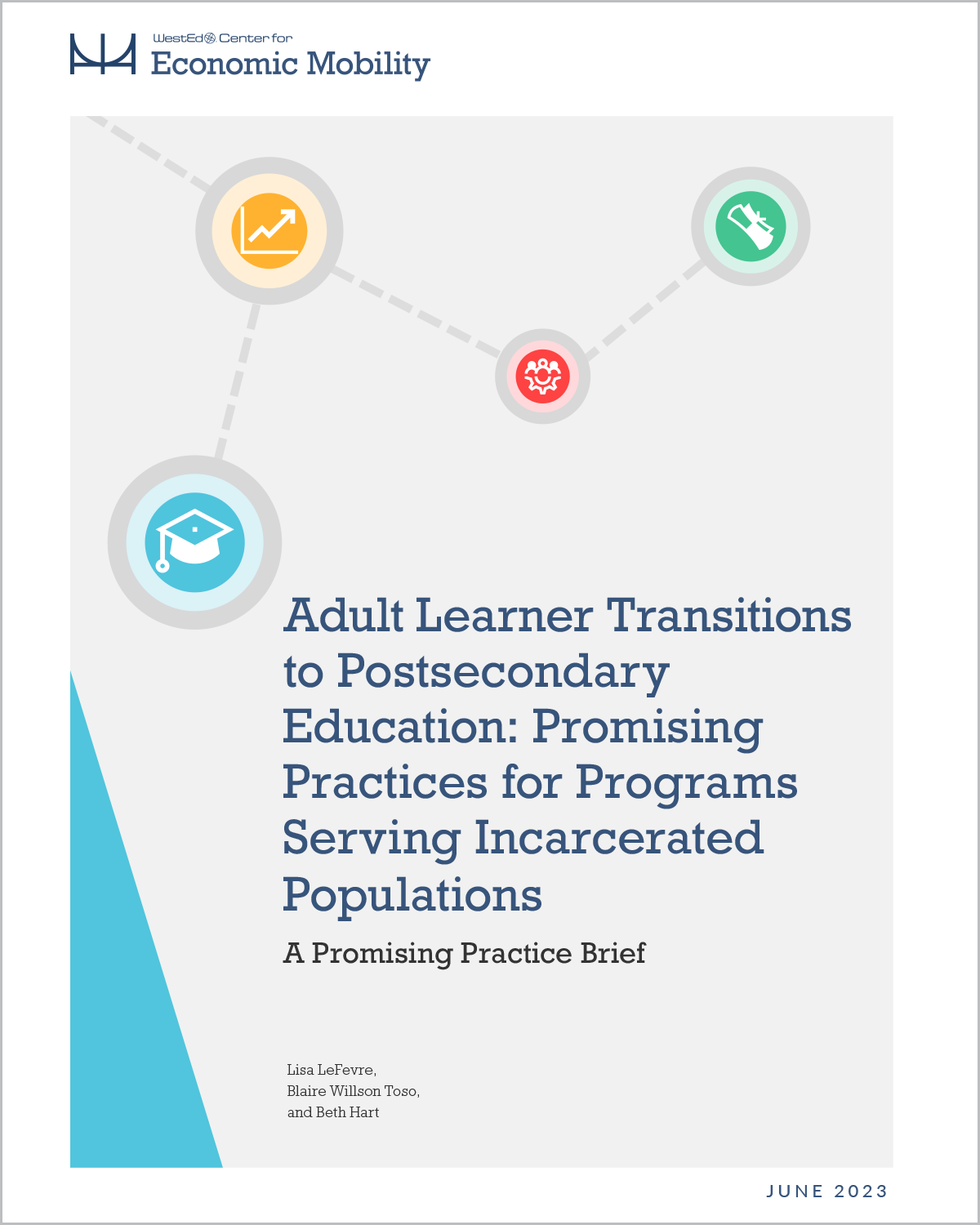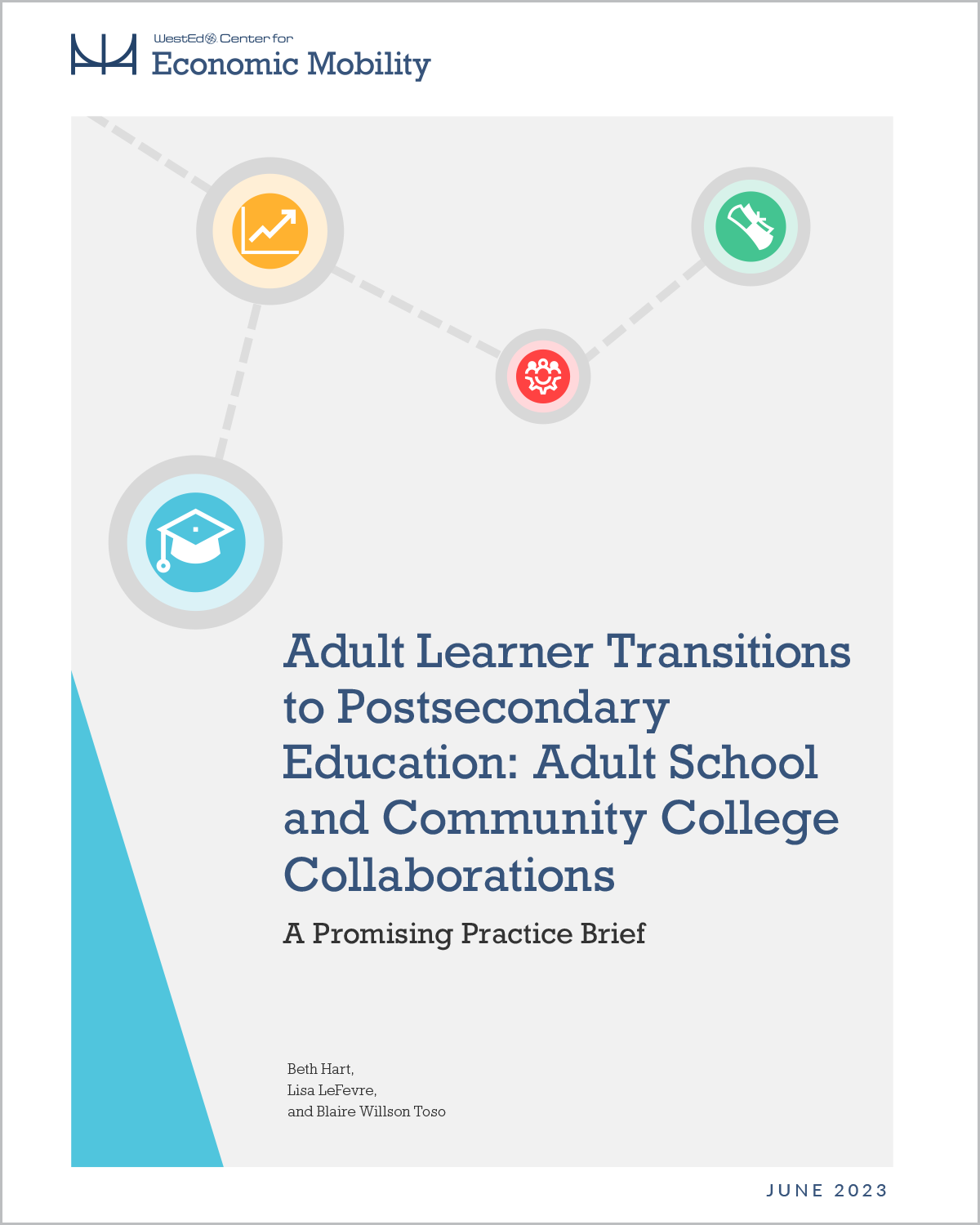Adult Education and Transitions Into Postsecondary Education and College Credit Pathways: An Analysis of California Adult Education Program Transition Rates by Program Type and Student Characteristics
Description
Adult education supports access to postsecondary education and living-wage employment for individuals with the greatest needs who have historically faced high barriers to economic mobility. However, few studies have been conducted on adult learner transitions.
This report examines the transition from adult education to postsecondary education for students enrolled at community college and K–12 adult school programs funded by the California Adult Education Program (CAEP). CAEP-funded programs help underskilled and underemployed adults transition to education or employment, which can put them on a pathway to living-wage jobs.
The report offers a nuanced look at transition rates by types of courses, age, race/ethnicity, and program type. The findings raise questions about equity and access for adult learners transitioning to postsecondary opportunities.
Key Findings
- Overall, about one in five students (21%) transitioned from basic skills to postsecondary education.
- Transition rates to postsecondary increased slowly from 2017 to 2019 due largely to an increase in the transition to career and technical education, whereas transfers to nondevelopmental college credit courses remained stable during the same period.
- Community college noncredit adult education programs reported higher transition rates than did K–12 adult school programs but enrolled fewer participating students.
- Transition rates to postsecondary for students in English as a second language (ESL) programs were about half as high as the transition rates for students in adult basic education (ABE) and adult secondary education (ASE) programs.
- Students enrolled in community college ASE programs were more likely to transfer to credit college courses than were other students.
- Younger students, Black or African American students, and White students were more likely than their peers were to transition to postsecondary education.
- Students aged 24 and under in ASE and ABE programs had transition rates to credit college courses nearly twice as high as the transition rates of students from other age groups.
- Hispanic students in ESL programs had the lowest transition rate to overall postsecondary.
Resource Details
Product Information
Copyright: 2023Format: PDF
Pages: 31
Publisher: WestEd
Stay Connected
Subscribe to the E-Bulletin and receive regular updates on research, free resources, solutions, and job postings from WestEd.
Your download will be available after you subscribe, or choose no thanks.
